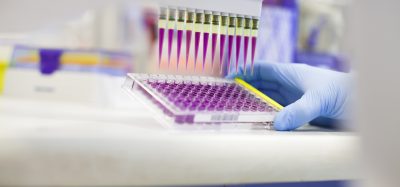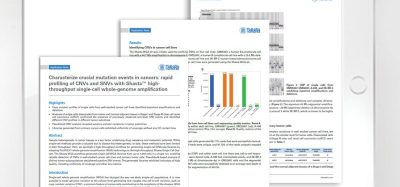A day in the life of Kenji Schorpp, assay development and screening scientist
Posted: 29 October 2013 | Kenji Schorpp, Assay Development and Screening Scientist, Helmholtz Center.
Kenji Schorpp, Assay Development and Screening Scientist, talks to Drug Target Review about his work at the Helmholtz Center…
Kenji Schorpp, Assay Development and Screening Scientist, talks to Drug Target Review about his work at the Helmholtz Center.
Academic drug discovery is an exciting and multifaceted business. The fast progression in molecular biology techniques in basic research exposes more and more promising protein targets involved in diseases. In my work as a scientist for an assay development and screening platform, I mainly focus on underexplored protein classes that have the potential to be novel drug targets. The diversity of projects associated with all different disciplines of molecular biology (e.g. stem cell research, immunology, DNA repair) makes the work in academia so fascinating. I believe that identifying a specific inhibitor for any target could provide important basic scientific information, thereby having both therapeutic and scientific value. A potent compound can be very useful to study cellular pathways and can give additional ideas for future drug discovery projects. This point is of course not the scope of Pharma driven drug discovery, but enables me to employ basic research data to create strategies for combining basic research and drug discovery.
There are many interesting protein targets. From my experience, the decision for a drug discovery project should be always based on self research results confirmed by other laboratories. Moreover, I discuss all pros and cons with our collaboration partners to create follow up strategies for moving the projects beyond the level of screening.
Usually the research results are obtained by classic bench scale settings. Therefore my expertise is needed for identifying potential assay formats compatible with High Throughput Screening (HTS) and includes basic research to improve protocols for protein purification (e.g. in the case of biochemical assays) and to acquire reagents based on assay design. Furthermore, the identification of proper controls is always an important issue. For instance, in protein-protein-interaction assays, the identification of non-binding point mutations is essential to give information about the maximum inhibition that is reachable and plays a crucial role for interpretation of screening data afterwards. Of particular importance is the identification of false positives and off-targets at an early stage to reduce the attrition rate in very time-consuming and expensive late stages of the drug discovery process. For this reason, I spend a considerable amount of time developing several biochemical assays in parallel to have secondary and counter-screening assays to be able to quickly validate hits obtained from HTS. Besides biochemical assays, I also establish high content imaging assays or other type of cellular assays to test designated hits also in a cell-based phenotypic context.
The final transfer to automation requires practical experience about robotics and liquid handling systems. Establishing robust assays with high reproducibility requires a very careful maintenance programme for all the machines to avoid operator effects and costs due to unexpected errors. In addition, the programming for automation and reviewing of the screening processes before starting a big campaign are part of my daily work.
If automation of the assay works, I start the screening campaign with a pilot screen of a small library (2000 – 5000 compounds). This pre-screen gives important information about the hit rate and robustness of the assay. An assay fulfilling all of the important criteria is then screened against a bigger library of interest. The next step is to process all the screening data and to operate the different hit validation strategies. The comparison of different primary screening datasets allows me to identify frequent hitters. Specific inhibitors should give similar inhibition curves for the primary target independent of the technology (e.g. AlphaScreenTM vs. HTRFTM). The use of secondary assays identifies ‘false positives’ but gives no information about selectivity. In vitro profiling of the compounds in counter-screening assays established for a panel of related proteins can then reveal potential off-target activities and identify selective compounds. SAR studies with the primary, secondary and counter-screening assays enable the separation of off-target effects and can further improve selectivity. In parallel, cell-based phenotypic assays provide additional criteria to select compounds that enter the cell and show effects in established signalling and disease models. With this strategy, all compounds interfering non-specifically and non-selectively are eliminated at a very early stage, potentially reducing high attrition rate at later stages. In general, the experience of the last few decades shows the need for basic research to find novel targets and motivates me and other scientists from academia to translate their basic research into drug discovery efforts to discover novel drugs and/or tool compounds.
Related topics
High-Throughput Screening (HTS), Screening
Related organisations
Helmholtz Zentrum München
Related people
Kenji Schorpp








